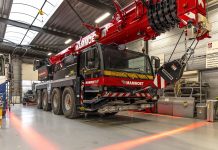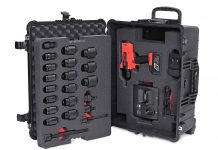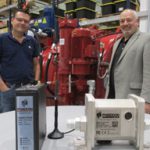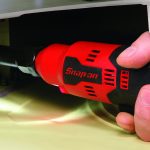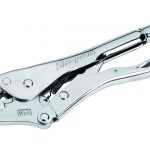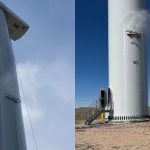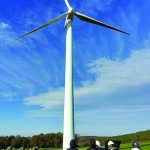Authorized climber? Authorized person? Competent climber/rescuer? Qualified climber???
Do all these terms describe the same certification? As an instructor of wind turbine safety at Ecotech Institute, I’ve been asked this question many times over the years — in one form or another — by students, site managers, and HR personnel. The clear answer only came into focus, however, when I joined the safety training team at Technical Rescue Systems (TRS) of Fort Collins, Colorado. Founder, owner, and Master Instructor, Steve Fleming has been a wealth of knowledge for me in sorting out the subtle and not so subtle differences amongst these terms. As a member of the expert panels that form the consensus for multiple safety organizations including ANSI, NFPA and NATE (National Association of Tower Erectors), Fleming has the credentials to trust in this field. With nearly four decades of experience as a firefighter including decades as Captain of the Poudre Fire Authority of Fort Collins, Colorado, he has been a trusted leader in the safety field almost as long as this writer has been alive.
“There are so many interpretations of these terms, and giving you a concise answer isn’t easy. It depends on which organization you’re asking about,” Fleming begins in response to my barrage of questions. “There’s a drive to have them agree to an understanding between the three [organizations].” My boss and safety mentor broke it down for me into the following basic terms:
Authorized Person
OSHA recognizes this cert level as identifying a site visitor who will not be expected nor authorized to climb a turbine. However, they still have been instructed as to the general site hazards such as ice that could fall or be flung from blades and driving conditions and expectations on site. Since it is not an authorized “climber” certification however, this card in no way implies that this person is trained to climb turbines. Perhaps this cert may someday become a company policy standard for even setting foot on a site, but it is currently not a requirement for most sites. This is typically a one-day course with much less hands-on training than any other certification.
 Authorized Climber
Authorized Climber
The authorized climber cert describes someone trained in the proper use of a personal fall arrest system (PFAS). Since there is no mention of rescue training, it should be assumed that this person is not qualified to perform a rescue, and therefore an authorized climber should be accompanied by two “competent climber/rescuer” certified persons, or climb with a single competent climber/rescuer with another competent climber/rescuer nearby who is capable of responding within a few minutes to a distress call.
A short-term goal for an authorized climber is to quickly move towards the level of “competent climber/rescuer.” Since the competent level implies experience and familiarity with the work environment, hiring managers will not likely see entry-level applicant resumes flaunting this cert. Such advanced level training can only be provided by training companies that can effectively simulate the work environment and train with similar rescue and PFAS equipment.
Much more time is needed to effectively train someone to climb and practice safe work-at-height skills of the authorized climber. Therefore, this is typically a two-day course, and only properly equipped training companies are truly qualified to offer such a cert. A ladder with a safety cable does not suffice.
Authorized Climber/Rescuer
This certification can be misleading. It would seem safe to assume that such a certification qualifies someone to perform rescues. In fact, the training provided will have included at least one rescue technique. However, the term “authorized” is not generally considered to signify experience in the field. A lack of familiarity with the wind turbine environment would leave a newly hired person far short of the necessary experience to safely perform a rescue in or from a turbine. It is conceivable that relying on workers with this low level of rescue preparation represents a false sense of security. Perhaps a better name for this cert would be “Authorized Climber/Rescue Assistant” as the level of training certainly qualifies this person to assist in the rescue process. The issue of pairing the terms “authorized” with “rescuer” is such a large concern that some organizations, including NATE, question the authorized climber/rescuer cert’s validity.
Despite the concern about the term contradiction mentioned above, in some work-at-height industries, it might be unrealistic to have significantly experienced personnel on the payroll. Therefore, even having a competent climber/rescuer available may not be an option. This may be why this “in-between” cert even exists. Still, in the wind energy industry, technicians climb almost everyday, so this dilemma does not seem to arise on wind farms often.
Competent Climber/Rescuer
A competent climber/rescuer can be considered to be more of a supervisor to the entry-level, authorized climber. This certification course commonly spans three to five full days. It is appropriate for a worker with a high level of familiarity with the work environment. NATE quantifies this level of experience as including at least 90 days of climbing/working at height. In the case of a wind turbine, this means that the certified competent climber/rescuer knows exactly where all rescue equipment is located, what exactly is in the rescue kit, has practiced simulated rescues using the equipment in question, can determine the best anchor points to utilize, and can alter the rescue procedure to accommodate unforeseen variables. As Steve Fleming puts it, “A competent person has the abilities to make changes by identifying existing and unpredictable hazards, take prompt corrective measures, and adapts the rescue procedure accordingly.”
The competent climber is capable of performing inspections on equipment. In fact, OSHA characterizes competent climbers as being capable of leading the site safety program.
If an authorized climber card is the ticket to entry for a wind technician, then the competent climber/rescuer certification is verification of experience in various rescue techniques. Again, NATE standards recommend that each climbing team have two competent climber/rescuers present at the very minimum.
Qualified Climber/Rescuer
A qualified climber/rescuer is a large step above a competent one. The qualified person will have all of the skills of a competent person, but will also have the technical knowledge to make design decisions such as appropriate anchor points. They tend to be closer to the design team of engineers. This requires the qualified person to have knowledge of metallurgy and an ability to research the strength of materials. The qualified person must know how to estimate loads put onto anchors and personal fall arrest systems (PFAS) such as the maximum arrest force (MAF) of a fall. Experience and skill in performing equipment inspections is essential.
Employers tend to recognize certain technicians for advancement. Sending the most professional and reliable technician or technicians for this training is a justified reward for the high level of service they provide to the site. While the technical knowledge reflected by this certification can only enhance a company’s safety program, this may not be considered an appropriate certification for an entry-level technician. To bear the responsibility such a certification deserves, it is recommended that the technician who carries this certification have a much higher level of familiarity with the wind turbine than a new hire is likely to have.
Recertification Cycles
How often do technicians need to recertify? Typically, training companies will provide a one-year certification, however they may offer a two-year cert with the caveat that the site safety program must include a refresher session annually at the very minimum. This session can be overseen by an outside trainer, or by a competent climber/rescuer from the site or company.
Compliance
It is important to note that OSHA can and will impose fines upon a site if company safety standards are not upheld, even if the violation in question exceeds OSHA requirements. For example, OSHA currently restricts climbing a turbine in “inclement weather,” but they are not specific as to the meaning of the term. If the company states in its safety policy that technicians are not to climb the turbine in winds faster than 25 m/s, OSHA can impose a fine for workers not following their company’s own policy even if the worker has not violated any specific rules of OSHA. This can have profound impacts on the way a company states the requirements for the certifications technicians must hold. If the various certification terms are misunderstood and used improperly, a site may find it very difficult to remain in compliance with its own company policy.
Conclusion
Thanks to safety leaders such as Steve Fleming and the top-notch training provided by his thirty-year old company, Technical Rescue Systems, we can now find ourselves better prepared to make hiring and training decisions for our industry’s technicians. Aspiring wind turbine technicians can now make informed strategy decisions to help them work safely and land the job they want. We all know that, of all of the tools available to us in the work we perform, knowledge is the most valuable tool of all.
















